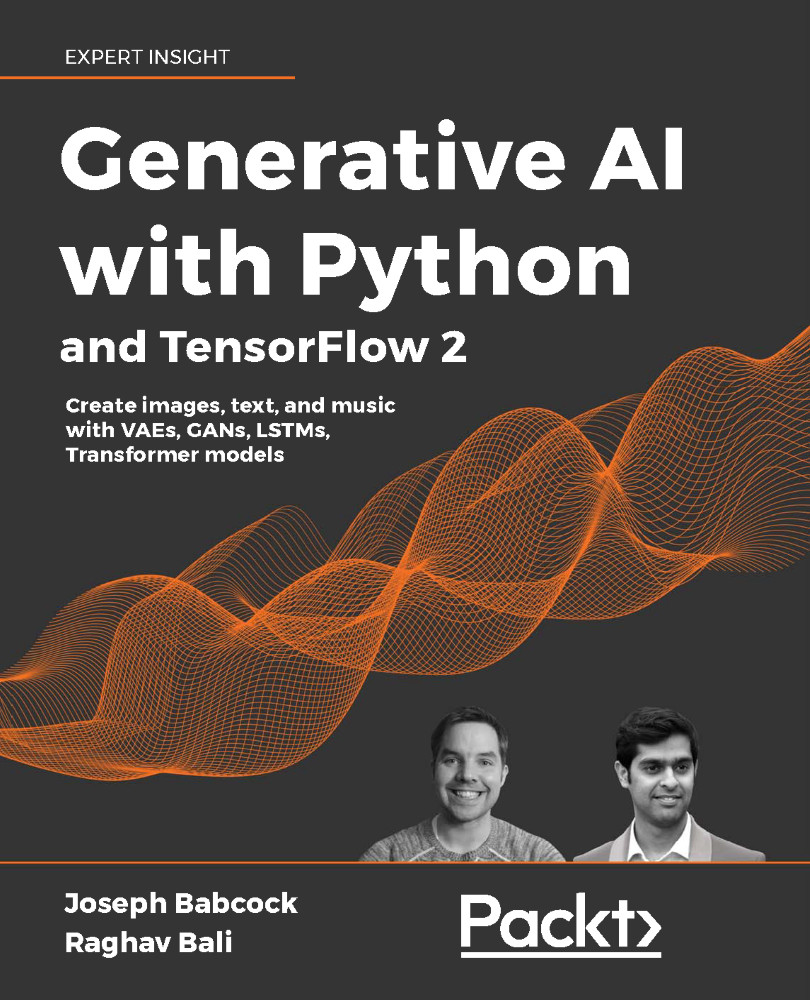The variational objective
We previously covered several examples of how images can be compressed into numerical vectors using neural networks. This section will introduce the elements that allow us to create effective encodings to sample new images from a space of random numerical vectors, which are principally efficient inference algorithms and appropriate objective functions. Let's start by quantifying more rigorously what makes such an encoding "good" and allows us to recreate images well. We will need to maximize the posterior:

A problem occurs when the probability of x is extremely high dimensional, which, as you saw, can occur in even simple data such as binary MNIST digits, where we have 2^ (number of pixels) possible configurations that we would need to integrate over (in a mathematical sense of integrating over a probability distribution) to get a measure of the probability of an individual image; in other words, the density p(x) is intractable...












































































